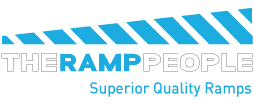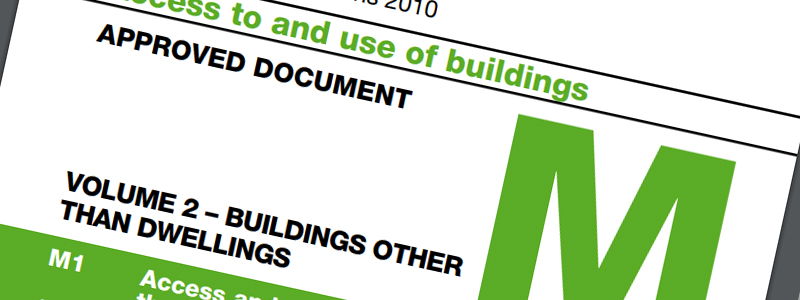
Disabled Access Regulations and Part M Ramps
While many of our wheelchair ramps are perfect for temporary use and occasional access, often there is a need for a more permanent access solution. This is where our custom ramp service comes in. We can offer Part M ramps that are fully compliant with UK building regulations for disabled access. Just like our modular ramps, your custom solution will be a robust semi-permanent ramp for safe wheelchair access, but will also be completely compliant with Part M and Part K building regulations.
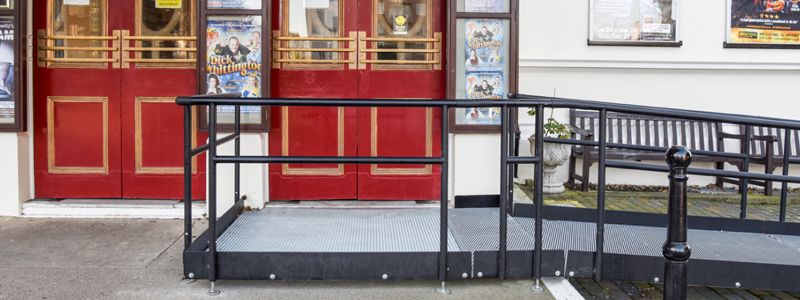

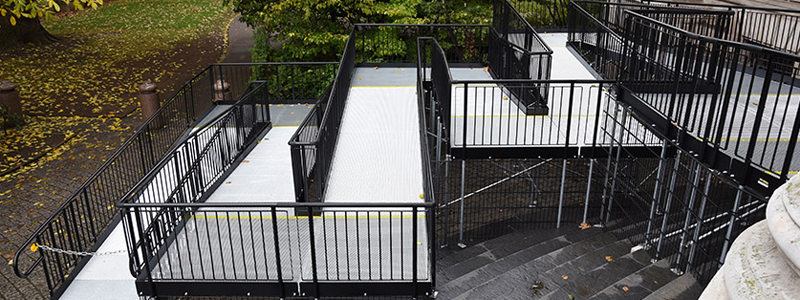


What is Part M and why you might need to be compliant
Part M building regulations are the standard to which all building work in the UK is measured against. Part M building regulations deal specifically with the access to and use of buildings, and is an important part of enforcing The Equality Act 2010. There are specific sections concerning disabled ramp regulations and other accessibility, and the basic requirement of Part M regulations is that everybody, including anyone with a disability, should be able to access every part of a building. There are Part M disabled access regulations for both dwellings and other buildings, such as public buildings or landmarks. Both outline the reasonable adjustments and safe requirements that any building work needs to adhere to. This encompasses everything from building sanitation to ensuring there is enough space through doors and hallways for wheelchair access. Arguably the most important part of the regulations addresses disabled access to buildings, with guidelines for the safe gradients, platforms and space outside the entrance to ensure wheelchair users can enter the building safely. While public buildings and services such as doctor’s surgeries and educational establishments have a legal obligation to comply with Part M disability building regulations, everyone has a responsibility to provide disabled access to buildings.
Wheelchair ramp regulations
If you’re in need of a semi-permanent wheelchair ramp solution and want to make sure you’re compliant with Part M wheelchair access regulations, here’s a few things to consider.The wheelchair users
Standard wheelchairs and mobility scooters or electric wheelchairs often require a different type of ramp to accommodate the difference in weight. If you’re looking for a Part M ramp, you’ll need to consider what type of wheelchair you need to provide access for. If it’s a residential property, you may know you only need to provide wheelchair access for one type of wheelchair. Public buildings will usually need a modular ramp that can handle both. This will also affect the width of the ramp you need, and high traffic areas may also want to consider a wider ramp. Additionally, you’ll have to consider the platforms outside the entrance and at the end of each level. Part M disabled ramp regulations outline the minimum standard for platforms to enable wheelchair users to turn safely, but scooters or high traffic areas may also want to think about bigger platform areas.
Pedestrians
Other pedestrians are also still an important consideration when looking at Part M building regulations and wheelchair access. The surface of the ramp needs to be safe for walking pedestrians as well as wheelchair tires, especially as ramps can often collect water and cause the slope to become slippery. Similarly, handrails can be more dangerous than safe without the proper considerations. Children for example often play on the handrails, and gaps in the bars can allow them to fall. Ramps accommodating a high load height may also have gaps underneath the ramp itself and present another potential hazard.The space
You will also need to consider your load height and how this will affect the overall length of the ramp and the space needed, compared to the space you have. Wheelchair ramp regulations clearly outline safe gradients that need to be adhered to. For tall load heights, this can often result in extremely long ramp lengths which can be a problem for buildings with a smaller outside entrance space. Platforms are needed in these situations to help fit the ramp in, but you will need to think about how obstructive the ramp is and the best way to ensure it stays safe for all users and meets Part M buildings regulations.
The benefits of our Part M ramps
Complying with disabled ramp building regulations can seem daunting. Fortunately, we have over 25 years’ experience in the industry and work with an experienced partner to guide you through the process from start to finish. We can work with small entrances, high load heights and complex requirements to ensure you meet disabled access ramp building regulations. Working with a partner with building expertise, you’ll enjoy a fast and efficient service for a speedy planning and building process, and we’ll always work to find you the most affordable solution.The wheelchair users
Our Part M Ramps offer you the option to customise the width and our detailed knowledge of safety gradient requirements ensure your ramp is both safe for all users and compliant with Part M building regulations. From our platforms to our ramp lengths, these ramps come at the minimum Part M safety requirements as standard, with the option to customise the measurements to suit your needs and accommodate all wheelchair types. You can also opt for highlighted level changes, with high visibility stickers indicating a change in level to ensure maximum wheelchair safety. This is especially important when the ramp is in use during poor weather or in the evening and night time.
The pedestrians
Because disabled access regulations aren’t just about the wheelchair users, our ramps come with a highly durable slip-resistant surface. Ideal for ensuring safe access during both dry and wet weather, we can also provide a perforated surface to allow any water through. This ensures that the ramp surface doesn’t collect any water and become too slippery. For Part M handrails, we choose from a range of custom options that are compliant with disabled access ramp building regulations with a focus on safety. Opt for infill handrails with a variety of infill bar options to protect all users, particularly children, who could fall. Similarly, an infill skirt on the bottom of the ramp protects the underneath.The space
Working closely with you from the very start, our qualified team will use your requirements and measurements to produce detailed 3D drawings and plan the right ramp fit for the space. For smaller entrances, we can help to plan out a multi-level ramp solution with a safe gradient and un-obstructive layout. Our qualified partner will then take over the build process. To top it all off, our partner guarantees a high-quality finish and efficient process from start to finish. Made from high-grade materials and fitted by industry professionals, our Part M ramps offer unparalleled quality and affordability.
Contact us today
Simply call one of our friendly sales team to start discussing your Part M compliant wheelchair access solution today. Alternatively, if you’re looking for a more temporary solution that doesn’t need to be Part M compliant, our modular wheelchair ramp offers a similarly high-quality finish.
Related Products

Modular Kit with Platform and Balustrade Handrails (1100mm x 1360mm long)
£2,967.60
£2,473.00

Modular Kit with Platform and Balustrade Handrails (1100mm x 1900mm long)
£3,036.00
£2,530.00

Modular Kit with Platform and Balustrade Handrails (1100mm x 2310mm long)
£3,174.00
£2,645.00

Modular Kit with Platform and Balustrade Handrails (1100mm x 2700mm long)
£3,871.20
£3,226.00

Modular Kit with Platform and Balustrade Handrails (1100mm x 3300mm long)
£4,078.80
£3,399.00

Modular Kit with Platform and Balustrade Handrails (1100mm x 3800mm long)
£4,292.40
£3,577.00

Modular Kit with Platform and Balustrade Handrails (1100mm x 4600mm long)
£4,636.80
£3,864.00

Modular Kit with Platform and Balustrade Handrails (1500mm x 1360mm long)
£3,526.80
£2,939.00

Modular Kit with Platform and Balustrade Handrails (1500mm x 1900mm long)
£3,808.80
£3,174.00

Modular Kit with Platform and Balustrade Handrails (1500mm x 2310mm long)
£4,036.80
£3,364.00

Modular Kit with Platform and Balustrade Handrails (1500mm x 2700mm long)
£4,872.00
£4,060.00

Modular Kit with Platform and Balustrade Handrails (1500mm x 3300mm long)
£5,161.20
£4,301.00

Modular Kit with Platform and Balustrade Handrails (1500mm x 3800mm long)
£5,444.40
£4,537.00

Modular Kit with Platform and Balustrade Handrails (1500mm x 4600mm long)
£5,900.40
£4,917.00

Modular Kit with Platform and Double Height Handrails (1100mm x 10400mm long)
£7,190.40
£5,992.00

Modular Kit with Platform and Double Height Handrails (1100mm x 1360mm long)
£2,490.00
£2,075.00

Modular Kit with Platform and Double Height Handrails (1100mm x 1900mm long)
£2,730.00
£2,275.00

Modular Kit with Platform and Double Height Handrails (1100mm x 2310mm long)
£2,622.00
£2,185.00

Modular Kit with Platform and Double Height Handrails (1100mm x 2700mm long)
£3,105.60
£2,588.00

Modular Kit with Platform and Double Height Handrails (1100mm x 3300mm long)
£3,250.80
£2,709.00

Modular Kit with Platform and Double Height Handrails (1100mm x 3800mm long)
£3,444.00
£2,870.00

Modular Kit with Platform and Double Height Handrails (1100mm x 4200mm long)
£3,582.00
£2,985.00

Modular Kit with Platform and Double Height Handrails (1100mm x 4600mm long)
£3,760.80
£3,134.00

Modular Kit with Platform and Double Height Handrails (1100mm x 5200mm long)
£4,285.20
£3,571.00

Modular Kit with Platform and Double Height Handrails (1100mm x 6900mm long)
£5,340.00
£4,450.00

Modular Kit with Platform and Double Height Handrails (1100mm x 7600mm long)
£5,934.00
£4,945.00

Modular Kit with Platform and Double Height Handrails (1100mm x 8000mm long)
£6,141.60
£5,118.00

Modular Kit with Platform and Double Height Handrails (1100mm x 8400mm long)
£6,279.60
£5,233.00

Modular Kit with Platform and Double Height Handrails (1100mm x 9200mm long)
£6,555.60
£5,463.00

Modular Kit with Platform and Double Height Handrails (1100mm x 9800mm long.)
£7,380.00
£6,150.00

Modular Kit with Platform and Double Height Handrails (1100mm x5700mm long)
£4,471.20
£3,726.00

Modular Kit with Platform and Double Height Handrails (1100mm x6000mm long)
£4,623.60
£3,853.00

Modular Kit with Platform and Double Height Handrails (1500mm x 10400mm long)
£9,295.20
£7,746.00

Modular Kit with Platform and Double Height Handrails (1500mm x 1360mm long)
£2,953.20
£2,461.00

Modular Kit with Platform and Double Height Handrails (1500mm x 1900mm long)
£3,216.00
£2,680.00

Modular Kit with Platform and Double Height Handrails (1500mm x 2310mm long)
£3,416.40
£2,847.00

Modular Kit with Platform and Double Height Handrails (1500mm x 2700mm long)
£4,009.20
£3,341.00

Modular Kit with Platform and Double Height Handrails (1500mm x 3300mm long)
£4,272.00
£3,560.00

Modular Kit with Platform and Double Height Handrails (1500mm x 3800mm long)
£4,540.80
£3,784.00

Modular Kit with Platform and Double Height Handrails (1500mm x 4200mm long)
£4,734.00
£3,945.00

Modular Kit with Platform and Double Height Handrails (1500mm x 4600mm long)
£4,927.20
£4,106.00
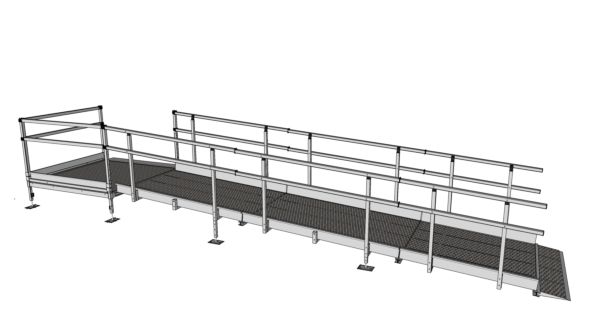
Modular Kit with Platform and Double Height Handrails (1500mm x 5200mm long)
£5,596.80
£4,664.00
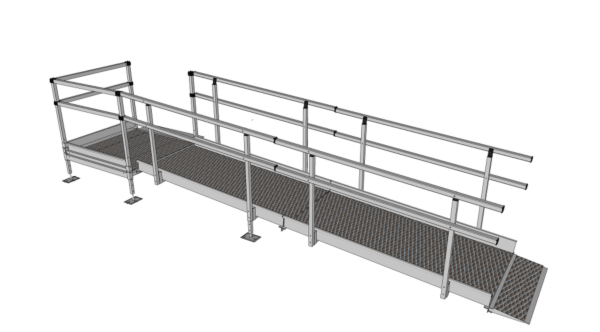
Modular Kit with Platform and Double Height Handrails (1500mm x 5700mm long)
£5,859.60
£4,883.00

Modular Kit with Platform and Double Height Handrails (1500mm x 6000mm long)
£5,983.20
£4,986.00

Modular Kit with Platform and Double Height Handrails (1500mm x 6900mm long)
£6,960.00
£5,800.00

Modular Kit with Platform and Double Height Handrails (1500mm x 7600mm long)
£7,740.00
£6,450.00

Modular Kit with Platform and Double Height Handrails (1500mm x 8000mm long)
£7,980.00
£6,650.00

Modular Kit with Platform and Double Height Handrails (1500mm x 8400mm long)
£8,160.00
£6,800.00

Modular Kit with Platform and Double Height Handrails (1500mm x 9200mm long)
£8,640.00
£7,200.00

Modular Kit with Platform and Double Height Handrails (1500mm x 9800mm long)
£9,360.00
£7,800.00

Magnetic support bracket
£29.40
£24.50
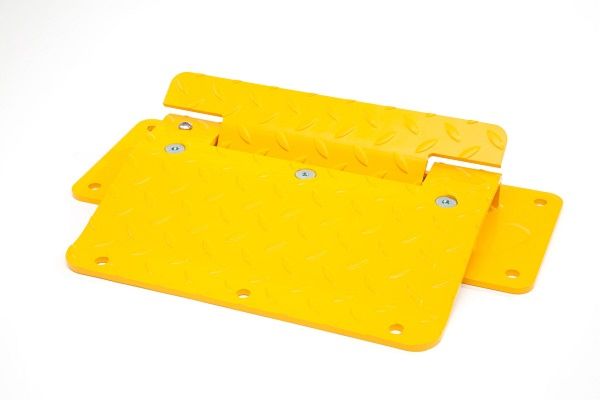
Heavy Duty Flow Plates
£240.00
£200.00
